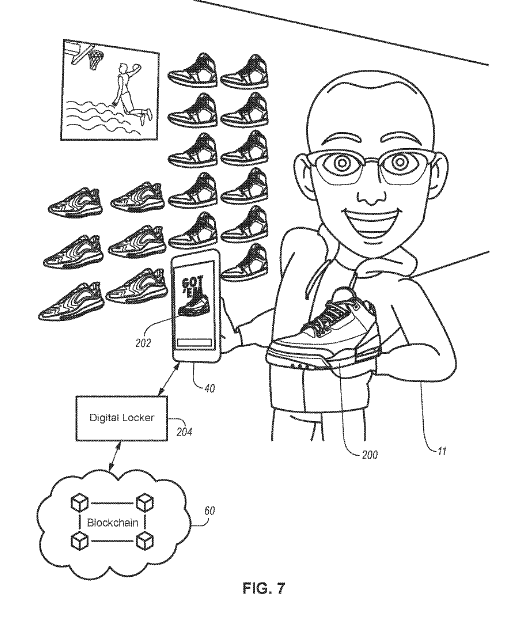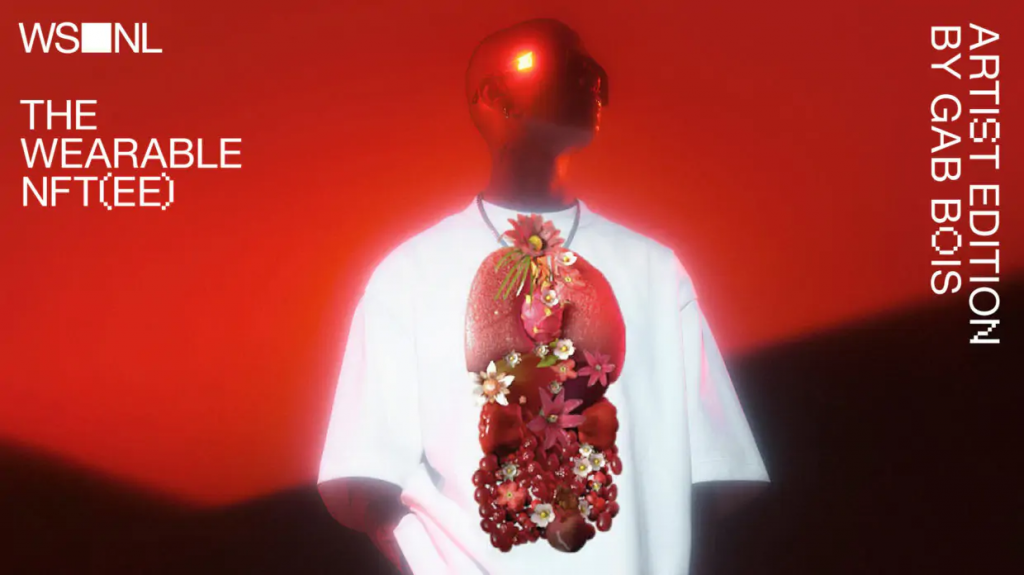As companies are pouring money into 3D digital environments, metaverse and NFT ecommerce are now nearing reality.
NFTs appeared back in 2017 and gained huge traction only at the end of 2021, but it doesn’t seem that the interest in them will die down any time soon. Quite the contrary, the market finds its way to broaden the use of NFTs, with Walmart announcing that they are going to drop their own cryptocurrency and NFT collection this year.
Apparently, NFTs have become a thing not only for digital artists but also for celebrities and brands of any size as well. But how does NFT for eCommerce actually work?
Let’s dive deeper into the concept of NFTs, discover the benefits it brings to e-retailers, and see the ways in which you can use NFTs to your advantage.
What Is an NFT?
NFT stands for non-fungible tokens. None of these words are commonly used, so let’s unpack them individually.
A token is a digital asset backed by blockchain technology that records and stores all info about the digital object: its type, past operations performed with it, the time and person that purchased it, and the sequence in which it was acquired. It is almost impossible to rewrite something in a blockchain and, therefore, forge a token and sell a fake NFT.
Non-fungible means unique, so a token can’t be exchanged for anything. For example, one dollar can be exchanged for one dollar because they have the same value. The same goes for cryptocurrency in ecommerce. But van Gogh can’t be exchanged for Dali because the value of both can’t be compared objectively. NFT is a van Gogh in this situation.
Some of the most expensive and intriguing NFTs sold are:
- the digital artist Pak’s newest creation, The Merge, ($91.8 million).
- Everydays: the First 5000 Days ($69.3 million): a collage of 5000 digital images created by Mickael Winkelmann, aka Beeple.
- the first-ever tweet of the Twitter CEO Jack Dorsey ($2.9 million dollars).
Why Are Some NFTs so Expensive?
You may ask yourself – why would anyone pay millions of dollars for an image that you can freely download and distribute? The answer lies in the question itself.
Reason #1: Internet users have been struggling with proof of ownership a lot. Because it’s so easy to just download, view, or copy a digital file, creative artists have no way to prove their copyright and, thus, lose on royalties. All NFTs exist as a public record, meaning anyone can see the past operations and re-sales of a non-fungible token. This allows digital content creators to monetize their work.
A very big difference between the art market and NFTs is that the artists take 10% to 20% from the secondary sales. So anytime the piece will sell again, part of the sale will always go to the artist. This is really a novelty in the idea of art and can be a big game-changer for artists.
– confirms Mauro Martino, director of the Visual Artificial Intelligence Lab at IBM Research, in an interview for DW.
Reason #2: Scarcity and uniqueness drive the price high. The Starry Night of van Gogh can’t have the same value as even the finest duplicate. Similarly, the “Down the Rabbit Hole” cover image of The Economist sold at $420,000 can’t be compared to its digital version sent out in weekly newsletters. NFTs prevent forgeries and attribute value to the digital asset.
Obviously, the NFT value is subjective, as in the case with all artworks. But what you sell with an NFT is copyright and exclusivity, which is what the rich of the world are ready to pay for.
How Does NFT Work in eCommerce?
To get an NFT eCommerce token, you just have to create a digital version of a real product or come up with a whole new idea. Then, you choose your NFT eCommerce platform – the most famous being OpenSea, Rarible, and Nifty Gateway – connect a crypto wallet, upload the digital versions, and you are done.
Note: The Etherium NFT platform is facing criticism over the Earth-crushing environmental impact of the so-called mining operations that keep their blockchains running. So you may want to explore other, less resource-intensive platforms to mint your ecommerce NFT.
Popular ecommerce platforms, like Shopify, already allow selling NFTs directly on the merchant’s storefront. You can simply turn your digital asset into an NFT and list it on your website for sale. But if you’re having trouble setting up an NFT and getting paid for it, hire a Shopify developer to help you out.
Adobe is also preparing to enter the NFT market and has already integrated the NFT minting capabilities in its design software such as Illustrator and Photoshop (Adobe Commerce, aka Magento, is yet to come).
Some examples of NFT in ecommerce are the viral virtual sneakers by RTFKT, Glass Suit and “Doge” Crown by Dolce & Gabbana, or Balenciaga’s skins in Fortnite.
Feeling excited about the NFT news in e-commerce? Share the trend with your colleagues!
Advantages of NFT in eCommerce
No wonder high-end brands have hopped on an NFT global trend: non-fungible tokens bring a wealth of benefits in eCommerce. Let us list a few.
Proof of Ownership
It is a common happenstance when unique assets like art, antiques, or rare brand items are stolen and resold. If you buy a stolen item, you may face serious consequences so it is always better to prove the ownership. NFTs come helpful here because they certify the current owner of the digital token and the transactions.
Practical application in ecommerce: Nike has secured an NFT for the blockchain-enabled sneakers called Nike CryptoKicks that allow tracking of the whole shoes lifecycle and ownership of real sneakers.

Authenticated Transactions Record
It is quite hard to prove the originality of something nowadays – copies are made so well that you simply can’t tell the difference. NFTs will eliminate this problem easily. For example, you sell an item with a QR code that sends customers to its unique NFTs where it is written who produced it. Customers may also resell it later and prove its authenticity to the second-hand market with an NFT.
Practical application in ecommerce: Hublot has partnered with the global luxury blockchain, the Aura Blockchain, to trace the origin of the luxury watch. An e-warranty is attached to each piece’s microstructure, stored in the blockchain and, if stolen, will reflect the status to prevent re-sale.

Exclusivity
Because an NFT is all about uniqueness, exclusiveness which adds value, it may soon become a new trend for luxury retailers. For each person who buys a high-end product like a Chanel Classic Flap Lambskin purse, there might be 10 people who’d prefer to buy the same pre-owned piece. Fashion lovers prefer having limited editions, so by owning an NFT that proves the exclusivity of the product, it would be easier for its owner to turn it over.
Practical application in ecommerce: a luxury online fashion retailer Winkelstraat.nl (WS.NL) dropped a limited-edition range of 500 T-shirts, which is called “NFTees.” It came to be known as the first wearable NFT to be accessed via an AR filter.

Virtual Property Claim
NFTs are a great way to claim your property in the virtual world: you can claim your clothes, means of transportation, houses, and everything in it. Brands that are entering the metaverse faster are likely to stay on top of the competition as it becomes the new reality.
Practical application in ecommerce: Paris Hilton has released NFTs for her fashion collection. These NFTs can be claimed in MetaVerse and worn digitally.
What Type of eCommerce Websites Can Benefit from NFTs?
NFTs can be anything: picture, painting, autograph, music, video, meme, a gif, an avatar, etc. Brands from a variety of ecommerce niches can leverage this technology to disrupt the market:
- Art: the most obvious way to use NFTs in the art sector is by attributing the digital assets to the existing sculptures, paintings, and other pieces of artwork. Your customers will benefit from the coveted proof of ownership encrypted in the blockchain.
- Home decor and furniture: you can sell furniture online, rare rugs, expensive tableware while collaborating with games engines or other metaverse companies.
- Fashion: fashion has already entered the industry – you can find NFTs from Gucci, Louis Vuitton, Burberry, Nike, and others. And they sell well too!
- Custom software: NFTs can work as a second layer of license to make sure that no one will distribute copies of it.
- Vehicles & automotive: give away NFT toy cars as Elon Musk did or auction your NFT vehicles for charity like Barrett-Jackson: use the technology to improve your brand image in the automotive industry.
- Subscription services: create blockchain-based membership services to easily locate your customer data and provide real-world utility. That’s what Yes Plz coffee did: the subscription for their ambitious Bored Breakfast Club project comes with an NFT with unique digital signatures, and customers get free shipments of freshly roasted coffee.
Ecommerce NFT Starter Pack: 5 Ways to Use NFTs to Your Advantage
Even if your brand is far from Tesla or Balenciaga, you can still benefit from the NFT trend in ecommerce. Here are four ideas to combine NFT and ecommerce for your business transformation.
Research & Development
Data analytics of Google Analytics, CMS, CRM platforms can provide you with valuable insights, but not as valuable as the customers themselves. NFTs can help here to learn about your audience’s pain points, marketing claims, flavors, materials and more. Conduct surveys among your customers and offer them benefits for your future products (like early access to drops or potential profit-sharing) in exchange for their time and honesty.
Customer Rewards
If a customer chooses your eCommerce business, make sure they know how special their support is for you. Tokenize your customer services. Offer your clients tickets to your brand’s fashion shows and exhibitions. Present them with NFT discounts, exclusive collections, the opportunity to engage with famous brand ambassadors, etc.
In short, use NFT to reward your customers and make them more loyal to your brand.
New Sales Channels
Even if you’ve already embraced omnichannel ecommerce, there are still new unrevealed sales channels we bet you haven’t stepped foot in. Like games.
Partner with some leading game engines and provide your young, GenZ customers with virtual replicas of your iconic physical products, protecting ownership via NFTs. That’s how Burberry, a British luxury fashion house, introduced their digital accessories in a Mythical Games (NFT)-based video game startup.
Community Building
The value of NFT oftentimes comes not only from an item itself but from the benefits that are attached to it. They often include community, meaning that a customer gets into an exclusive club with celebrities and regular customers where they can chat or sometimes meet at events. Choosing an NFT as skin in the game or a Twitter profile picture, they become members of an exclusive club.
Community building can be a great way to retain customers – they will feel more attached to your brand, enjoy exclusive offers and, therefore, come back for more. Eventually, you’ll gain a higher customer lifetime value and reduce costs on attracting new clients.
Read more: Ecommerce Future Trends in 2022 You Should Definitely Watch
Pre-Sale & Product Launch
We live in the era of a drop culture now – where the anticipation before a new product release is as exciting as the shopping itself. NFTs work really well in such cases – you can announce a drop (exact date, time, and the minting price of the NFT and/or the physical product attached to it) and create enough suspense and desire to shop later.
For customers, NFT drops also become a great investment. They are able to buy tokens at more affordable prices and choose their most desired ones rather than what is left. Actually, NFT collectors have entire communities and social media notifications to track all the drop announcements.
NFT and eCommerce Afterthoughts
Brands, especially luxury ones, seem to start using NFTs as actively as digital artists. There are a lot of use cases for NFT in eCommerce; it can act as a community-building tool, proof of authenticity, customer rewards, marketing of pre-orders, etc.
With the metaverse approaching, it is very likely that virtual items such as clothes, furniture, decor, houses, or cars will gain more and more value. So if you can jump on the bandwagon as soon as possible, you will be at the top when the metaverse comes into full force.
Do you want to start an eCommerce business and seek a top-notch eCommerce website development company? Reach out to us at Elogic, and we will develop a website with great functionality and user experience for you!
Partner with ecommerce experts and develop a future-proof website
Build my ecommerce store now

